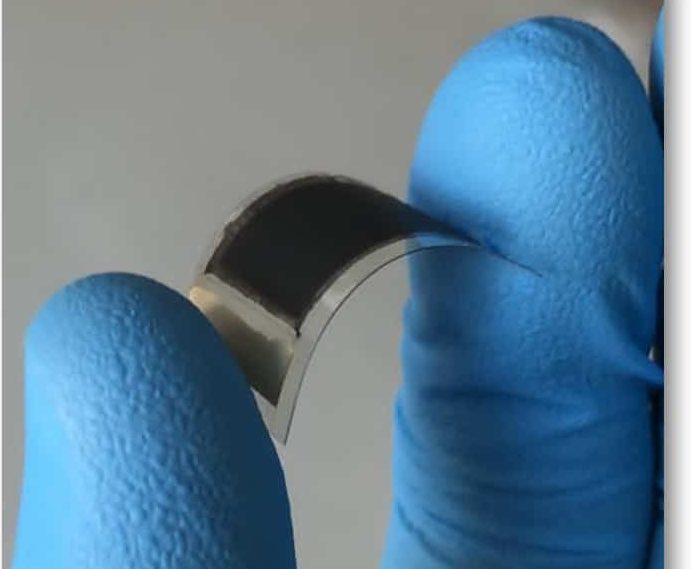From pv magazine Global
Perovskite solar cells are well known for their high-efficiency potential and low-cost production. Solving the issues of long-term stability and sensitivity to moisture and other ambient atmosphere conditions, without hampering efficiency, will be a major step towards improving solar cell and module performance, and scientists have presented a wealth of different approaches to achieving this.
Many of these rely on additives to the perovskite precursor materials that serve to strengthen the crystalline structure, but in some cases can also harm its efficiency in generating energy. Now, a group of scientists led by the Catalan Institute of Nanoscience and Nanotechnology (ICN2), and Switzerland’s École Polytechnique Fédérale de Lausanne discovered an organic compound known as 3-phosphono propionic acid (H3pp), which served to greatly improve device stability with no observable effects on its solar performance.
The group fabricated complete perovskite solar cells based on a mixture of methylammonium, formadinum, and cesium, as well as lead and iodine. These cells achieved initial efficiencies of around 21%. When tested for 1,000 hours under “one-sun” illumination, the cells fabricated with H3pp retained close to 100% of their initial performance, while control cells without the additive suffered more than 20% performance loss.
Shallow defect passivation
Further analysis of the cells showed that the additive served to passivate ‘shallow’ defects in the material – creating strong hydrogen bonds that essentially block ion migration that can cause degradation in the material. Deeper defects that assist in cell performance, meanwhile, were left untouched. “The H3pp additive strongly bonds to the perovskite… via two types of hydrogen bonds (H.IandO.H), passivating shallow point defects,” the researchers explain. “Given that the passivation does not occur through deep defects, the non-radiative recombination is not mitigated, and the device performance (Voc and efficiency) remains unaffected by the presence of the H3pp additive.”
The devices and methods used to characterise them are described in the paper Decoupling the effects of defects on efficiency and stability through phosphonates in stable halide perovskite solar cells, published in Joule.
Beyond demonstrating this impressive device performance, the group hopes its research will help to improve understanding of different defect types that exist in a perovskite material, the characteristics they are responsible for, and ways to influence one without affecting another. Halide perovskites are “soft” ionic electronic conductors with a strong ionic component, which now, thanks to the results of this work, can be associated to shallow point defects. “This research provides new relevant information about the impact of defects in halide perovskite solar cells that will certainly help disentangle the effects of distinct defects on the different properties of the devices,” the group concludes.
This content is protected by copyright and may not be reused. If you want to cooperate with us and would like to reuse some of our content, please contact: editors@pv-magazine.com.









By submitting this form you agree to pv magazine using your data for the purposes of publishing your comment.
Your personal data will only be disclosed or otherwise transmitted to third parties for the purposes of spam filtering or if this is necessary for technical maintenance of the website. Any other transfer to third parties will not take place unless this is justified on the basis of applicable data protection regulations or if pv magazine is legally obliged to do so.
You may revoke this consent at any time with effect for the future, in which case your personal data will be deleted immediately. Otherwise, your data will be deleted if pv magazine has processed your request or the purpose of data storage is fulfilled.
Further information on data privacy can be found in our Data Protection Policy.